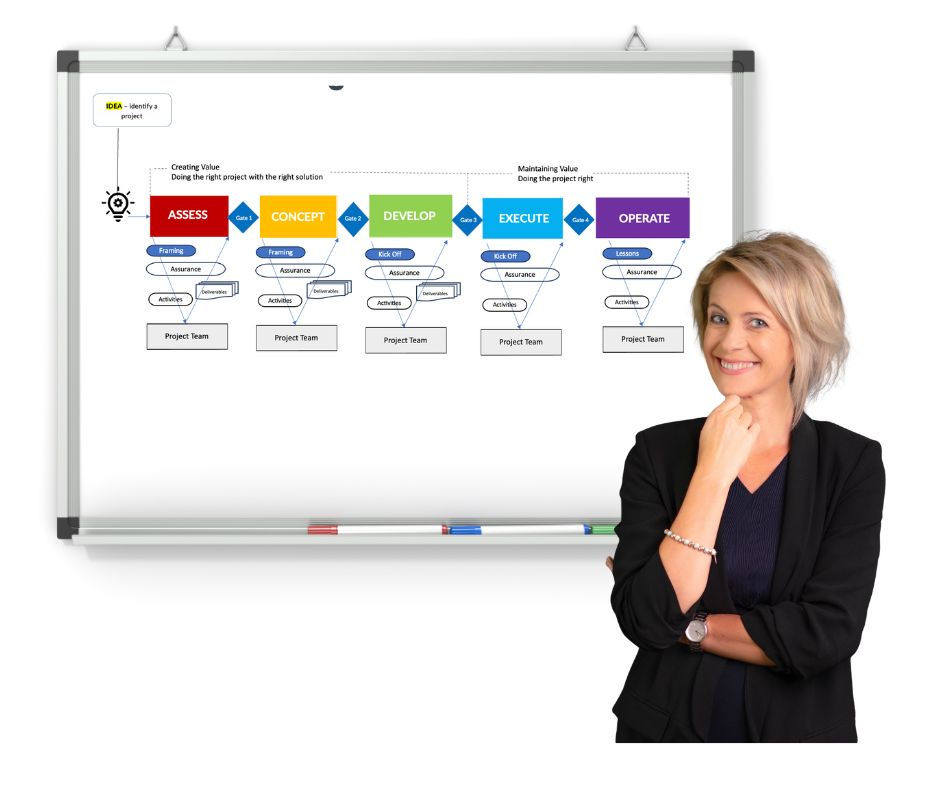3 Secrets To Frame Your Projects For Success
- Iwona Wilson
- Aug 15, 2022
- 3 min read

Vast majority of projects fail. Unsurprisingly this is not a secret that 1 in 3 projects on average fail and when it comes to mega complex projects like the ones in the oil and gas industry, the statistics go as high as 70% of them fail.
According to the IPA (Independent Project Analysis), the most common reason why so many projects fail is a poorly defined frame. So what is a frame? And how do frame projects significantly increase the chances of success?
When I talk about framing projects, I mean framing the ideas so that they are more likely to become a well-defined project. It is proven already that the more time you spend defining your idea and ensuring you understand the value proposition and have a creative and feasible solution, the higher the likelihood of success. And the difference is huge, for example, with a well-defined concept, even if you apply bad project management practices, you will achieve better outcomes on average than applying the best project management practices with poorly defined concepts. This is called front-end loading (early project planning).
So, here are my tips on how to frame projects
1. Stop chasing your projects start choosing them
Know how to use the stage gated process. For example, just having a stage-gated process in place is not enough. You need to know how to scale and make it relevant to a team.
The main purpose of the stage gated process is to distinguish between thos
e opportunities which are likely to fail and those which are likely to succeed. Make your decision process transparent so that teams and decision-makers are clear as to what to do.
Keep your gates strong, meaning you have them either open or close – stop letting projects that are not ready go through those gates. Your gates should help the decision makers answer the question of whether the opportunity is ready to progress and if there is merit.
2. Create a repeatable and scalable process to frame your ideas with clarity and stakeholders’ alignment
To frame your projects for success, start with framing your ideas first. Use the opportunity framing workshop right at the start of the assessment phase when you want to evaluate the value proposition and find out whether there is value to progressing the work on the opportunity. This is often the very first time when the decision makers, key stakeholders, opportunity manager, and the team get together to explore what the opportunity is about and align upon what is in the frame and what is not. This is the simplest way to achieve clarity on the scope and alignment on the way forward and it usually takes between half a day to two days of the professionally facilitated workshop.
You then want to repeat the exercise at the start of the concept phase to validate the key framing elements such as value drivers, the definition of success, strategic fit and focus on identifying a new set of assumptions, givens, focus decisions, options, and deliverables required to move to the next decision gate.
The process of framing is very dynamic and the output from this exercise is used as an input to key strategic deliverables such as risk register, risk management plan, project initiation plan, project development plan, or even project execution plan.
As you move to the third phase, the opportunity framing should be locked.
3. Focus on creating a high-performing team
If you want to achieve success with your projects, you need to focus on creating a high-performing team. This involves setting the right tone and creating an environment where everyone can work together towards a common goal. By following these simple tips, you can create a high-performing team:
Psychological safety: Your team needs to feel comfortable talking about their feelings and sharing their thoughts and ideas. You should be able to express appreciation (listen, acknowledge, thank) and share your faults and things that didn't work out.
Dependability: Set clear expectations and create clear commitments. Take actions and make decisions in a timely manner.
Structure and clarity: Everyone has a clear role, plans, and goals. Goals are specific, challenging, and workable. Implement regular strategic planning at every level. By involving your teams in the opportunity framing workshop, you’ll achieve engagement and alignment right from the start.
Meaning: Encourage self-expression by everyone. Find out what are your team's motivators.
Impact: Provide regular feedback and involve teams in decision-making and developing their work plan. By getting team participation in the opportunity framing workshops, they get the big picture and understand how they can contribute to the success of the project.
Frame your projects for success by setting realistic goals and focusing on the positive. Celebrate your accomplishments, and don't be afraid to ask for help when you need it.)
If you want to learn more about opportunity framing, book your free 30 mins through the website www.wilson.biz.




Comments